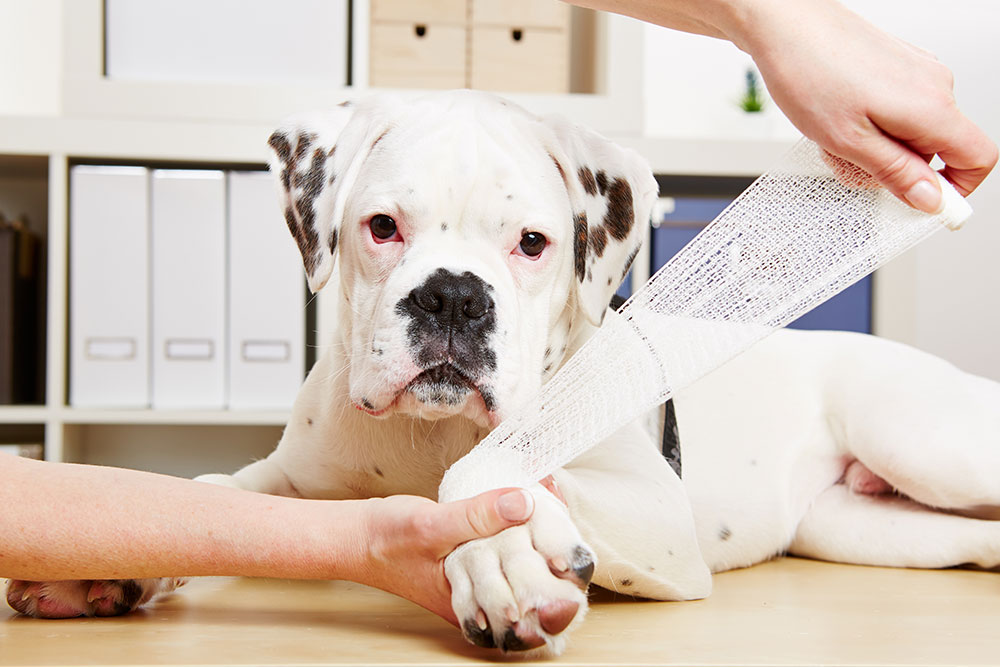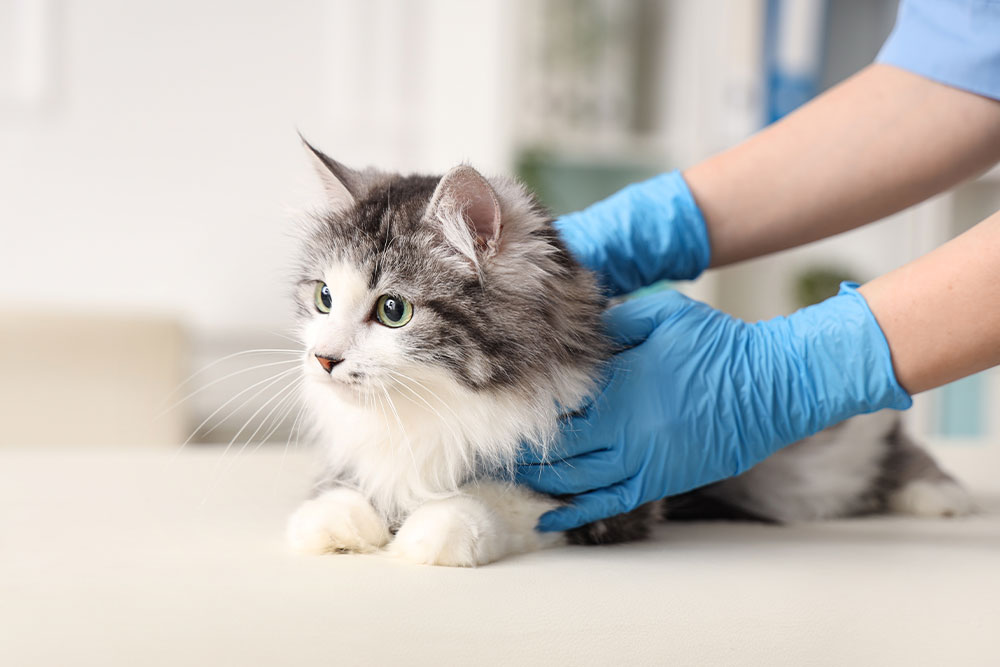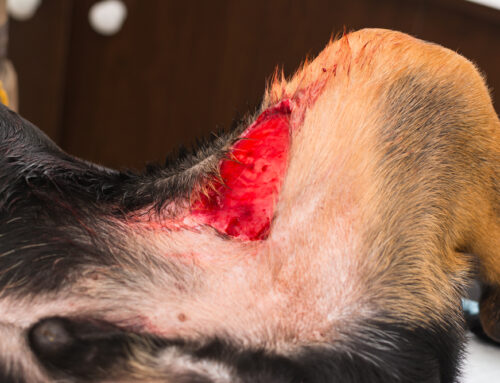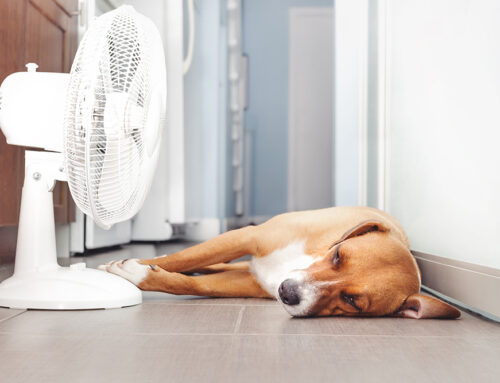Is Your Pet Hiding an Injury? Recognizing Internal Trauma After Accidents
Alpine Animal Hospital | Pocatello, Idaho
Accidents unfold in an instant- a slip on the stairs, a chase after a squirrel, or a collision with another animal. Sometimes the damage is easy to spot: a limp, bleeding wound, or visible swelling. Other times, the real danger is hidden inside. Internal injuries are especially challenging because pets cannot tell us when something feels wrong, and outward signs may be subtle or delayed.
At Alpine Animal Hospital, our team is trained to identify these silent emergencies using advanced diagnostics and years of experience in emergency medicine. Rapid recognition and immediate treatment often mean the difference between full recovery and lasting damage. This guide explores how internal injuries occur, the signs every pet owner should watch for, and why professional veterinary assessment is critical when trauma is suspected.
Why Early Detection of Internal Injuries Matters
Internal bleeding and organ damage can progress rapidly without external wounds. When blood accumulates in the chest or abdomen, it can lead to shock, respiratory distress, or organ failure. Prompt recognition and intervention are vital to preventing serious complications and improving recovery outcomes.
Common Types of Internal Injuries
Trauma can damage more than what’s visible on the surface. While external bleeding is alarming, many internal injuries do not involve obvious wounds and can be even more dangerous. Pets may look normal after an accident and then decline hours later as hidden injuries progress. Recognizing these possibilities helps you communicate effectively with your veterinarian and seek care quickly.
Splenic Rupture and Hemoabdomen
Hemoabdomen occurs when blood collects in the abdominal cavity, often after a splenic or liver laceration from blunt force trauma. A ruptured spleen is one of the most common causes of life-threatening internal bleeding. Pets may initially appear stable, but as bleeding continues they can collapse suddenly. Splenic injuries usually require surgical intervention once the patient is stabilized.
Damage to the kidneys or liver can also cause internal bleeding, toxin buildup, or both. Warning signs include abdominal swelling, pain on palpation, vomiting, and changes in urination.
Thoracic Trauma and Hemothorax
Blunt trauma to the chest may result in rib fractures, lung contusions, or cardiac injury. Even without external bleeding, bruising of the lungs or heart can significantly impair function. Guidance on how to manage thoracic trauma highlights the need for rapid stabilization and careful monitoring.
When blood fills the chest cavity (hemothorax), it restricts lung expansion and limits oxygen exchange. Owners may recognize bleeding in the chest by observing labored breathing, reluctance to lie down, or abnormal posture.
Non-Bleeding Internal Injuries
Not all internal trauma is associated with blood loss. Some injuries cause swelling, fluid leakage, or organ dysfunction that can be equally life-threatening:
- Pulmonary contusions (bruised lungs): Blunt trauma can bruise lung tissue, leading to fluid leakage into the airways. Pets may breathe rapidly, cough up pink-tinged fluid, or tire easily.
- Diaphragmatic hernia: A sudden impact may tear the diaphragm, allowing abdominal organs to move into the chest cavity. This restricts breathing and may mimic pneumonia or heart failure.
- Pancreatic trauma: Blunt abdominal impact can inflame or damage the pancreas, triggering severe pain, vomiting, and systemic illness.
- Kidney or bladder rupture: Even without external injury, the urinary system can tear during impact. Signs include straining without producing urine, abdominal swelling, or evidence of toxins in the bloodstream.
These conditions often show subtle signs—such as weakness, hiding, pale gums, or labored breathing—that progress over hours. Imaging such as X-rays or ultrasound is usually needed to confirm the diagnosis.
Warning Signs of Internal Bleeding
Dogs and cats instinctively mask pain, so watch for these subtle indicators rather than relying on visible injuries alone:
- Pale or white gums indicating poor blood circulation
- Rapid or labored breathing even when the pet is resting
- Weakness or collapse when attempting to stand
- Abdominal distension or firmness on gentle palpation
- Lethargy and reluctance to move beyond normal tiredness
Immediate Steps at Home
While arranging transport to the clinic, you can help keep your pet stable:
- Restrict movement to minimize further bleeding.
- Monitor vital signs such as gum color, breathing rate, and heart rate if you are comfortable doing so.
- Avoid feeding or watering, since anesthesia may be required upon arrival.
- Prepare for safe transport by gently securing smaller pets in a carrier or using a board for larger dogs.
Never attempt to treat internal injuries without veterinary guidance. Timely professional care is the most effective first aid.
Diagnostics at Alpine Animal Hospital
Our hospital provides a range of in-house tests and imaging to identify internal damage quickly and accurately.
In-House Laboratory Testing
Rapid blood work evaluates anemia, organ function, and clotting ability. The importance of blood testing becomes clear when managing trauma cases, as these results guide fluid therapy and transfusion decisions.
Diagnostic Imaging
- Abdominal and thoracic ultrasound detects free fluid in the chest or abdomen within minutes.
- Digital radiographs reveal rib fractures, pneumothorax, or organ displacement.
Depending on the severity of the injury, referral for more advanced imaging or care may be recommended.
Treatment and Recovery for Internal Injuries
Once internal trauma is identified, the first priority is stabilizing your pet and preventing further damage. The treatment plan depends on the type and severity of injury, but common steps may include:
- IV fluids and oxygen therapy to restore circulation and support vital organs.
- Blood transfusions for pets with significant blood loss or anemia.
- Surgical repair for ruptured spleens, torn organs, or diaphragmatic hernias.
- Chest or abdominal drains to remove fluid or air that prevents normal breathing.
- Pain management and antibiotics to ensure comfort and reduce infection risk.
- Hospitalization, pain control, and monitoring with round-the-clock evaluation of vital signs and repeat imaging.
With early intervention and tailored follow-up care, many pets recover well from internal trauma. Your veterinarian will design a plan based on your pet’s unique needs and test results, ensuring the best possible outcome.
When to Seek Emergency Care
Any signs of shock or breathing difficulty after trauma require immediate attention. Treat the following indicators as emergencies:
- Persistent weakness or collapse, difficulty moving
- Struggling to breathe or get comfortable when laying
- Pale or blue-tinged mucous membranes (gums)
- Restlessness, agitation, or unexplained anxiety
- Abdominal swelling, especially with pain
- Severe or worsening bruising, especially over large areas
- Difficulty maintaining body temperature, cool extremities
Trust Alpine Animal Hospital With Emergency Care
Internal injuries can be silent but life-threatening, and every minute counts. If your pet has experienced trauma or is showing concerning signs, do not wait to see if they improve on their own. Call Alpine Animal Hospital at (208) 269-7842 or schedule an appointment online for immediate evaluation. Our emergency team is available 24/7, equipped with advanced diagnostics and surgical capabilities to deliver rapid, compassionate care. With timely treatment, we can give your pet the best chance at a safe recovery and many more healthy days by your side.








Leave A Comment